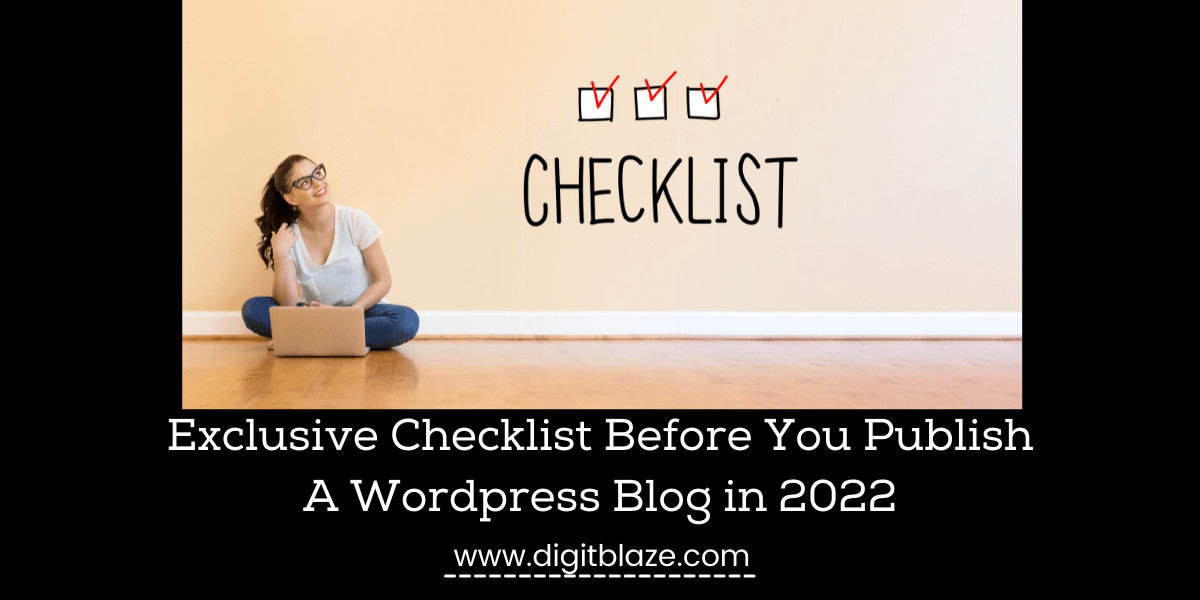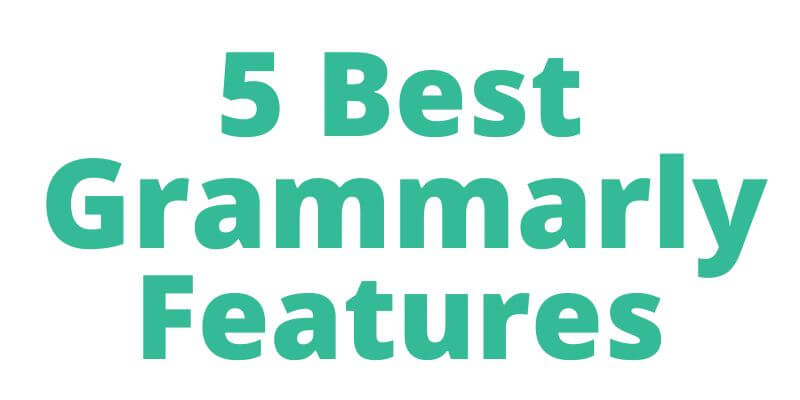Exclusive Pre-Publish Checklist for WordPress Blog in 2022
Welcome to my blog, if you are wondering how to optimize your wordpress blog before publishing you are at the right place.
Writing a good blog is important but optimizing it before publishing is equally important because this is what separates a failed blog vs. a successful blog.
If you are wondering why is it important to optimize your blog in a certain way, let me tell you that this checklist will help you rank better and get organic traffic to your blog for a long time.
In this article, I am going to share 11 points Exclusive Pre-Publish Checklist for WordPress Blog in 2022
So without wasting time let’s dive into it.

1. Read back the whole content thoroughly
When the whole content is written, it is very important for you to read it back and check for yourself whether the content sounds good or not.
Imagine you are the searcher and have landed on the content you have written; now see how your content sounds, like is it easy to understand or complicated.
By doing this, you will be able to find the errors and can make changes to them.
What I personally do is
- First I personally read by myself
- Then I use the chrome-based extension Read a Loud text to speech tool to listen to the content.
This will help you to minimize the errors and improve the engagement rate of your wordpress blog.
2. Optimize Blog Title
Blog titles are the first interaction between your blog and the searcher, this is what is going to decide whether they will click on your blog URL or not.
Optimizing your blog title will improve your click-through rate.
When writing a blog title you just have to consider two points,
- Ability to trigger emotion
- Strategically placing your focused keyword
To trigger emotions make use of power words in your titles, a very highly effective and proven method.
There are tools in the market that helps you with optimizing your wordpress blog titles,
Use them to analyze your titles. I personally use these two.
3. Grammar
Posting your blog without checking grammar is like you are on a suicide mission.
Grammatical errors directly affect the engagement rate of your blog.
I am not saying you have to be Shakespeare when writing, but make sure it is not full of errors that affect the readability of your blog.
People have a very short attention span and if it becomes difficult for them to read they are immediately going to leave your page.
To check grammar I personally use the Grammarly Chrome extension tool, a very easy and highly effective tool.
4. Readability
Readability is a visual representation of your blog.
It is very important that you optimize the whole visual experience of your blog from the reader’s perspective.
A good experience is going to improve the engagement rate keeping reader on your page.
I personally follow these points
- Use a good font like Poppins or open sans, don’t experiment a lot
- Use the font size of at least 17px
- Don’t use large paragraphs.
- Check the font and its size on mobile to make sure the mobile experience is good
- Use the right colors in your blog that improves the reading experience.
5. Featured Image
There is no compulsion of using the featured images for your blog, but it is good to have one.
A featured image, if optimized as per the content enhances the first impression of your blog.
It gives the idea about, what the content in the blog is going to be around.
When you share your blog on social media platforms, the featured image and the title of the blog post is displayed, so if it is well optimized as per the blog content it also helps with the click-through rate.
Keeping a featured image is not available for some themes, so you will have to check it for yourself for your theme.
I personally like to have a featured image and I use the rank math SEO plugin to set the featured image for the blog.
6. Categories
The well-organized setting of categories for a blog post is very important as it improves the on-page experience of your site.
For example,
If the person lands on your site for the first time and likes the content and want to read about all the similar blog topics, so in such cases to make navigation easy they can just click on that particular category like “SEO” or “Email Marketing” to navigate to all those blog posts on the site.
Don’t create a lot of unnecessary categories on your site as this can also adversely affect your site when getting indexed in google.
7. In Article Image Optimization
Using images in the article is one of the best strategies to improve the engagement rate,
but it should be done carefully as images are one of the heavy files that get uploaded on your site, which can slow down the overall speed of the site eventually damaging your traffic.
What I personally like to do is use the plugin “ TinyPng” to reduce the size of any image keeping it in the same quality.
This prevents the slowdown in the long run.
Other than that do these following things as well to optimize the images as per blog post,
- Use descriptive file names.
- Add alt text with focused keywords to your images.
- If you use captions, make them relevant to the image and add your focused keyword to them.
8. Linking strategy
There are two types of linking strategies that you do in your blog post, the first is internal, and the second is external.
Doing internal linking helps you to present all the quality content that you have on your site related to that topic.
With internal linking, you give the reader an ecosystem where they can find answers to all the queries that they have on that topic.
This will help you to earn the trust and convert the first-time visitor to repeat visitors to your site.
Doing external linking is like you providing resources to readers that you don’t have on your site.
External linking to resources from other authoritative sites shows the reader that you are committed to providing the value on the topic they have landed on your site.
So use these both linking strategies on your site wisely
9. Meta Description
A meta description is not considered in the ranking factor by Google, but a good meta description will help you with a good click-through rate.
Before publishing your blog post check how your meta description is looking on a google search engine,
Use SEO plugins like Yoast SEO or rank math SEO to check this.
Don’t do any clickbait with meta descriptions because this will damage the trust of the searcher who has landed on your site.
Just be clear, keep it short, and use the focused keyword in your meta description.
10. Header Title Tags
There are 4 main Heading title tags that are mostly used H1, H2, H3, H4
They work in hierarchy H1 being the most important ranking factor.
You have to be very strategic and careful with your header tags, just check for these points
- There should be only one H1 tag for each post and it should be only used for your main title.
- H2 tags should be used for all the main subheadings in your post that are answering the specific queries.
- H3 tags should be used as subheadings for H2 tags as the third most important part of your post.
- H4 tags, same as H3 should be used under the H3 tag as the fourth most important part of your post
Doing this strategically helps Google algorithm to understand what queries your content is answering sequence-wise
11. URL
URL is a complete address including domain name and “subfolders” that point to a specific page on the internet. You can see URLs in your web browser’s address bar.
There are just two things that you need to consider to make your permalink URL SEO-friendly.
- The URL should have your focus keywords
- The URL should be short, to the point, and very specific
Final Thoughts
This 11 point highly effective checklist is very easy to implement, which actually gives you good results in long run for your WordPress blog.
I hope you found this checklist helpful.
Just start implementing it right away in your wordpress blog.
To learn more read these articles
WordPress Tips and Tricks for beginners




